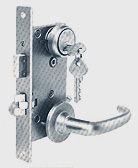Popcorn ceilings, also known as acoustic ceilings, were once a popular choice in many homes due to their cost-effectiveness and ability to reduce noise. However, as time went on, this textured finish fell out of fashion and has become an eyesore for many homeowners. If you find yourself wanting to update the look of your home, removing the popcorn texture is a great place to start. In this article, we will explore the process behind popcorn texture removal and provide you with some practical tips to make the task easier and more efficient.
Removing popcorn texture may seem like a daunting task, but with the right approach and tools, it can be a manageable DIY project. The process typically involves three main steps: preparation, removal, and refinishing. Before you begin, it is crucial to prepare the room by covering furniture, flooring, and fixtures to protect them from the dust and debris that will be created. Next, you’ll need to wet the popcorn texture using a garden sprayer or a spray bottle filled with water, making sure to saturate it thoroughly. This step helps loosen the texture and makes it easier to scrape off. Finally, after scraping off the textured layer, you’ll need to repair any imperfections, sand the ceiling, and apply a new coat of paint to achieve a smooth and modern finish. By following these steps, you can transform your outdated popcorn ceiling into a more visually appealing feature of your home.
1. Introduction: Understanding the importance of popcorn texture removal in home renovations
When it comes to home renovations, one crucial aspect that often gets overlooked is the removal of popcorn texture from ceilings and walls. Popcorn texture, also known as acoustic texture or cottage cheese texture, was commonly used in homes during the 1960s and 1970s. However, over time, its popularity has waned due to aesthetic concerns and potential health risks. In this section, we will delve into why popcorn texture removal is essential in home renovations and explore the significance of undertaking this process. By understanding the importance and implications of popcorn texture removal, homeowners can make informed decisions about their renovation projects.
First and foremost, removing popcorn texture improves the overall aesthetic appeal of a home. The texture, characterized by its bumpy and irregular appearance, tends to make spaces look outdated and can detract from a home’s aesthetic value. In today’s modern and minimalist design trends, smooth and clean surfaces are more desirable. By eliminating the popcorn texture, homeowners can give their interiors a fresh and contemporary look, instantly enhancing their home’s visual appeal.
Beyond the visual aspect, popcorn texture can also pose certain health risks. It is important to note that some popcorn textures applied before the 1980s may contain asbestos, a hazardous material known to cause lung diseases and cancer. Asbestos was commonly used in construction materials until it was banned due to its harmful effects on human health. The removal of popcorn texture allows homeowners to eliminate the potential risks associated with asbestos exposure, contributing to a safer and healthier living environment. Furthermore, the rough texture of popcorn ceilings and walls tends to accumulate dust and dirt over time. This buildup can be challenging to clean adequately, contributing to poor indoor air quality. By removing the popcorn texture, homeowners create a smoother surface that is easier to clean and maintain, thus improving the overall air quality within their homes.
Additionally, removing popcorn texture can also have a practical benefit. Popcorn ceilings tend to diminish the acoustics of a room, causing the sound to bounce erratically and create echoes. This can be particularly bothersome in areas such as living rooms or home theaters. By eliminating the popcorn texture, homeowners can achieve better sound quality and enjoy a more comfortable and enjoyable living space.
Lastly, the removal of popcorn texture allows for greater design versatility. With smooth ceilings and walls, homeowners have a blank canvas that can be easily painted or adorned with various decorative treatments. These options were often limited or less visually appealing with the presence of popcorn texture.
2. Preparing for popcorn texture removal: Tips on gathering the necessary tools and materials
Before embarking on the journey to popcorn texture removal from your walls or ceilings, it’s essential to gather the necessary tools and materials to ensure a smooth and successful project. Having the right equipment at hand will not only make the process more efficient but also minimize any potential damage to your surfaces. In this section, we will discuss the various tools and materials required for popcorn texture removal, helping you prepare adequately for the task ahead.
1. Protective Gear:
First and foremost, prioritize your safety by gathering the appropriate protective gear. Popcorn texture removal involves working with materials that could irritate your skin or eyes. To safeguard yourself, consider wearing safety goggles, a dust mask, and disposable gloves. These simple yet essential items will shield you from potential harm and allow you to work comfortably.
2. Drop Cloths and Plastic Sheeting:
To protect your floors and furniture from dust and debris, it’s a good idea to lay down drop cloths or plastic sheeting in the work area. These coverings will catch falling texture particles and make cleaning up afterward much more manageable. By taking this precaution, you can avoid any unnecessary damage or additional cleaning tasks once the project is completed.
3. Scrapper or Taping Knife:
A scrapper or taping knife is an essential tool for removing popcorn texture from your walls or ceilings. These tools have a flat blade that allows you to scrape off the texture, effectively removing it from the surface. Make sure to choose a scraper or taping knife with a comfortable grip, as this will help you maintain control and avoid any accidental damage to the underlying material.
4. Spray Bottle or Garden Sprayer:
Water is an essential component in the popcorn texture removal process as it helps to loosen the texture and make it easier to scrape off. To apply water evenly onto the surface, consider using a spray bottle or a garden sprayer. These tools disperse water in a fine mist, ensuring the entire area is dampened adequately without oversaturating it. Be sure to test the spray pattern before starting to ensure optimal coverage.
5. Plastic Putty Knife:
Once the texture has been scraped off, you’ll need a plastic putty knife to smooth out the cleaned surface. This tool helps remove any remaining residue or uneven patches left behind. Plastic putty knives are preferable over metal ones as they are less likely to leave marks or scratches on the surface. Take your time and use gentle strokes to achieve a smooth finish on your walls or ceilings.
6. Sandpaper or Sanding Pole:
After removing the popcorn texture, you may need to lightly sand the surface to achieve a flawless finish. Depending on the condition of the wall or ceiling, you can use sandpaper or a sanding pole to smoothen any imperfections and ensure a seamless transition. Remember to use fine-grit sandpaper or a sanding pole to avoid excessive damage or leaving visible marks on the surface. By gathering these necessary tools and materials, you’re well-prepared and equipped to take on the popcorn texture removal project. With the right gear at your disposal, you can ensure your safety, protect your surroundings, and efficiently complete the task. So, before you begin, take the time to gather these essential items to make your popcorn texture removal experience a successful and gratifying one.
3. Step-by-step guide to removing popcorn texture: Techniques, precautions, and best practices
Removing popcorn texture from your ceilings may seem like a daunting task, but with the right techniques, precautions, and best practices, it can be done efficiently and effectively. In this step-by-step guide, we will walk you through the process, ensuring a smooth and successful outcome.
1. Prepare the room:
Before you get started, it’s important to prepare the room properly. Remove all furniture from the area and cover the floors and remaining fixtures with drop cloths to protect them from dust and debris. Additionally, remember to turn off the electricity to the room and cover electrical outlets with plastic to prevent any mishaps.
2. Test for asbestos:
If your home was built before the 1980s, there is a possibility that the popcorn texture contains asbestos, a hazardous material. To ensure your safety, it’s crucial to test a small sample of the texture for asbestos before proceeding. You can find asbestos testing kits at local hardware stores or hire a professional to handle the testing for you.
3. Asbestos-containing texture:
Popcorn texture manufactured before the 1980s may contain asbestos, which poses potential health hazards. If you suspect that your popcorn texture contains asbestos, it is highly recommended to consult a professional for testing and removal. Disturbing this type of texture without proper precautions can release harmful asbestos fibers into the air, which can cause severe health problems.
4. Inconsistencies in popcorn texture:
Sometimes, homeowners may encounter inconsistencies in the popcorn texture across different areas or rooms of the house. This can make achieving a consistent appearance during the removal process a challenge. To address this issue, it is best to work on one area at a time and ensure that the removal technique and tools used are consistent throughout. If necessary, consider consulting a professional who can guide achieving a uniform look.
In conclusion, while removing popcorn texture may come with its own set of challenges, being aware of potential issues and troubleshooting strategies can help you tackle them successfully. Remember to approach the removal process with caution, follow safety precautions, and seek professional assistance when necessary. With patience and perseverance, you can achieve a smooth and updated look for your ceilings and walls.
5. Finishing touches: Tips for achieving a smooth and flawless ceiling after popcorn texture removal
Once you have successfully removed the popcorn texture from your ceiling, you’re left with a clean slate to create a new and refreshed look. However, it’s essential to give your ceiling the necessary finishing touches to achieve a smooth and flawless result. Here are some tips to help you along the way.
1. Assess the condition of the ceiling:
Before proceeding with any additional steps, take a close look at your ceiling. Look for any imperfections or damage that might need to be repaired. Check for cracks, holes, or uneven surfaces. It’s crucial to address these issues before moving forward to ensure a flawless finish.
2. Patching and repairing:
If you find any cracks or holes, it’s essential to patch and repair them. Use a joint compound or spackle to fill in these areas. Apply the compound with a putty knife, ensuring smooth and even coverage. Let it dry completely before moving on to the next step. Sand down any excess compound to achieve a seamless surface.
3. Sanding the ceiling:
Sanding the entire ceiling will not only help to create a smooth finish but also remove any residual texture or unevenness. Use a sanding pole with fine-grit sandpaper to sand the surface lightly. Work in small sections, moving the pole in a circular motion. Be sure to wear a dust mask to protect yourself from the debris. Once you have finished sanding, wipe away any dust with a clean cloth.
4. Priming the ceiling:
Priming the ceiling before applying a fresh coat of paint is highly recommended. Priming helps to seal the surface, ensuring better adherence to the paint and a more professional result. Choose a primer that is specifically designed for ceilings and apply it evenly with a paint roller. Be sure to allow the primer to dry thoroughly before moving on to the next step.
In conclusion, removing popcorn texture from your ceiling can seem like a daunting task, but with the right tools and techniques, it can be accomplished. Remember to start by preparing the room and protecting your furniture and floors. Wetting the ceiling and scraping off the texture is the most common method, but be sure to take breaks to avoid straining yourself. After removal, it’s crucial to skim-coat and sand the ceiling to achieve a smooth and polished finish. While the process may require time and effort, the end result is well worth it – a fresh, modern-looking ceiling that adds value and charm to your home. So, roll up your sleeves, follow the steps, and say goodbye to popcorn texture for good!
Website: https://mjhomepainters.com/





